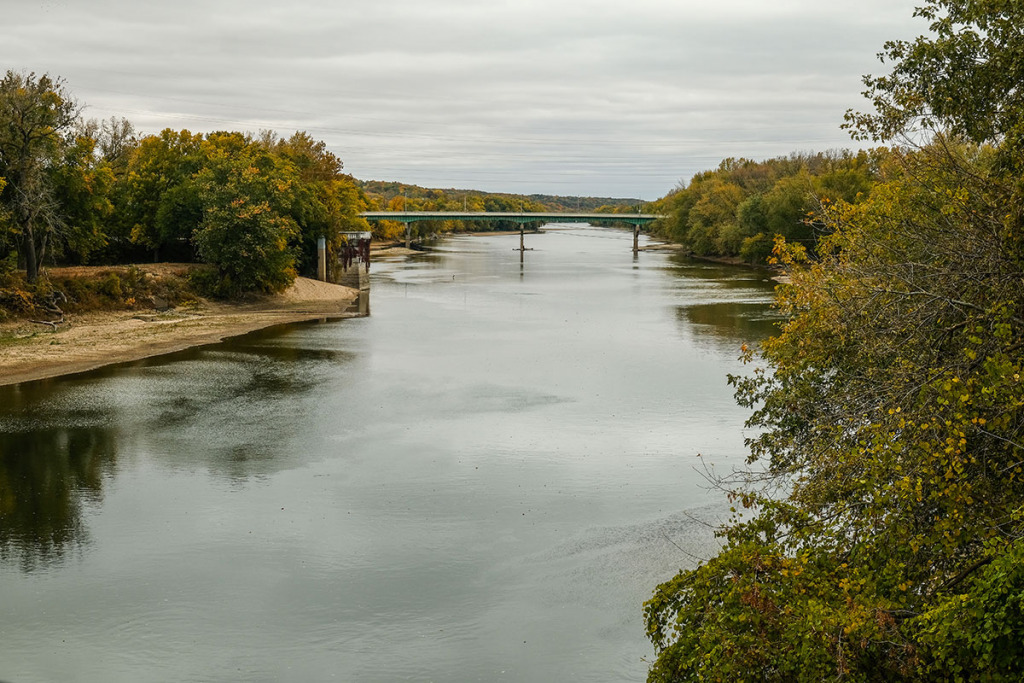Subscriber Benefit
As a subscriber you can listen to articles at work, in the car, or while you work out. Subscribe NowLafayette-area lawmakers are holding out hope to win some new protections for farmers’ water supplies, but their efforts to impose a new state regulatory process on huge water withdrawals for the LEAP Research and Innovation District or other large projects appear dead for this legislative session.
A pair of identical bills from Rep. Sharon Negele, R-Attica, and Sen. Spencer Deery, R-West Lafayette, won’t get a hearing in either chamber, the lawmakers told IBJ, but they said Republican leadership appears open to taking some language from the draft legislation and tacking it on as an amendment to a different bill.
Those conversations remain ongoing, Negele said, though she said she it was “frustrating” that House Bill 1305 didn’t get a hearing.
“We would have liked to see some regulatory structure in place to appeal to our constituents, and make them feel more comfortable about the process,” Negele said. “But ultimately the decision makers are not us.”
After area residents raised objections to a potenial plan from the Indiana Economic Development Corp. to take as much as 100 million gallons of water a day from Wabash River aquifers and transport it to the planned high-tech LEAP Research and Innovation District in Boone County, the governor shifted oversight of the IEDC’s water study to the Indiana Finance Authority.
A month later, the governor, Indiana Senate president and Indiana House Speaker met with Lafayette leaders about the project, and all parties agreed that was in everyone’s interest to hold off on any major decisions on a water pipeline until after the IFA completes a comprehensive water study, which is expected to be finished in the fall.
The pause, which some stakeholders in the region consider a victory, took away a sense of urgency to consider regulations on large withdrawals this legislative session, Deery said.
“In some ways we were a victim of our own success,” Deery said. “We were advocating for a pause, and we were successful in doing that.”
House Speaker Todd Huston, R-Fishers, told IBJ he’s working with Negele on getting possible protections for farmers’ wells added to another piece of legislation before session adjourns March 14.
While some protections exist for residential wells that are impacted by large water withdrawals, it’s unclear whether existing state law protects larger well operators, Negele said.
“The most important thing to me is reassuring farmers that they will be part of an emergency regulatory framework that we already have in place,” Negele said.
Her bill would have required groundwater withdrawals of at least 10 million gallons of water per day—that is then transported to a destination beyond the aquifer surface area— to receive prior approval through a regulated permitting process overseen by the Indiana Department of Natural Resources.
Under the legislation, large withdrawals would also have required public hearings and written feasibility studies that would have to be peer-reviewed by an expert in water resource hydrology, with the Natural Resources Commission becoming the permitting authority. Such permitting is not currently required.
Please enable JavaScript to view this content.


Water, water everywhere – and not a drop to drink…..
We must put a stop to this plan to move this amount of water just in the name of development. Look at the morass the West is in with the Colorado River that has been dwindled down to a trickle.
Apples and oranges, Anthony. The Colorado River originates in Rocky Mountain National Park near Grand Lake, Colorado, and is 1,450-miles long. It has a huge drainage basin that covers 244,000 square miles and ranks about sixth among the nation’s rivers in flow volume. Some 40 million people in seven states (as well as two states in Mexico) depend on the river for water, which also irrigates 5.5 million agricultural acres of land.
The legislature is a clown show.